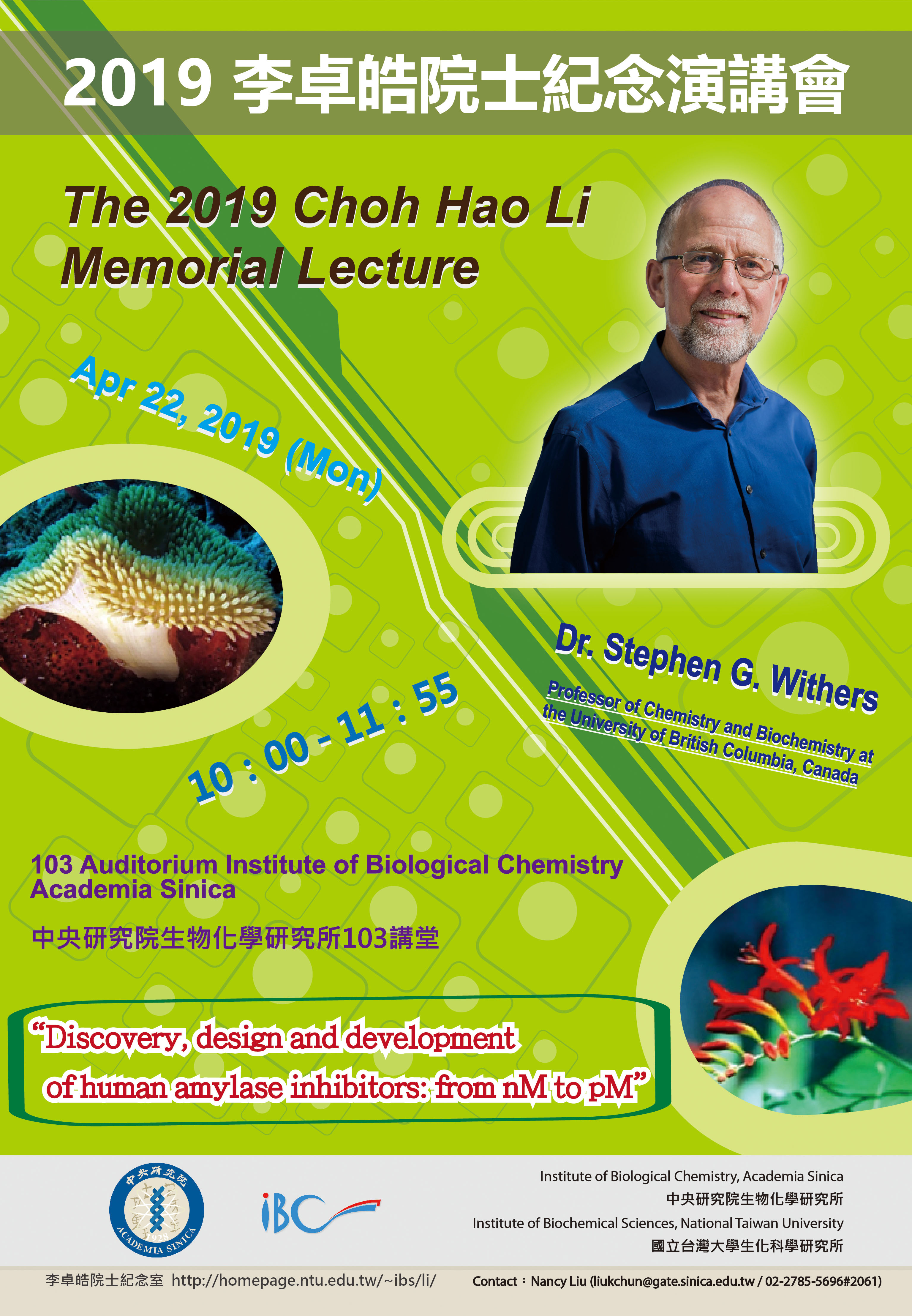2019-04-22 10:00 ~ 2019-04-22 12:00
Venue: IBC 103 Auditorium
Speaker: Dr. Stephen G. Withers
Current Position: Professor, Department of Chemistry, The University of British Columbia, Canada
Host: Dr. Kay-Hooi Khoo
Abstract:
Carbohydrates play important roles in biological systems, not only in the form of energy storage materials such as starch, but also as “recognition elements” on cell surfaces. The degradation of such sugar structures is achieved using enzymes known as glycoside hydrolases (glycosidases). Specific enzyme inhibitors are not only useful tools for understanding enzyme mechanisms, but also can play important roles as therapeutics if inhibition suppresses unwanted reactions. In this talk I shall discuss our efforts to discover new inhibitors of human pancreatic alpha-amylase (HPA) that have potential in the control of blood sugar levels, thus in the treatment of diabetes and possibly obesity. High-throughput screening of natural product extract libraries from terrestrial and marine sources, in conjunction with my colleague Ray Andersen, has yielded two new classes of potent (Ki = 8 nM and 10 pM) inhibitors of human α-amylase. The first compound, Montbretin A, was isolated from the beautiful Crocosmia plant shown below, and its inhibition characterized through degradation studies and through X-ray crystallographic analysis of its complex with HPA in conjunction with Gary Brayer (1). Subsequent animal studies revealed, good control of blood glucose levels in diabetic rats when administered orally (2). The second screen revealed helianthamide as a highly potent peptidic inhibitor of HPA, derived from a sea anemone (3, 4). Structural studies with these inhibitors reveal a new paradigm for glycosidase inhibition in which pairs of aromatic moieties joined via a short linker provide the key inhibitory motif. Synthesis of simple mimics of this core structure has yielded inhibitors with Ki values ranging down to 50 nM to date, while screening of very large libraries of cyclic peptides through ribosome display methodologies in conjunction with the Suga group has produced two sets of inhibitors with Ki values between 1 and 10 nM, with similar modes of inhibition (5). 1. Williams et al (2015) Nature Chemical Biology 11, 691-696. 2. Yuen et al 2016) Mol. Cell. Biochem. 411, 373-381. 3. Tysoe et al (2016) ACS Central Science 2, 154-161. 4. Tysoe and Withers (2018) Biochemistry 57, 5384-5387. 5. Jongkees et al (2017) Cell Chemical Biology 24, 381-390.-Dr. Stephen Withers
Contact person: Ms. Nancy Liu
Tel: 02-27855696#2061
Email: liukchun@gate.sinica.edu.tw

 Institute of Biological Chemistry, Academia Sinica
Institute of Biological Chemistry, Academia Sinica
